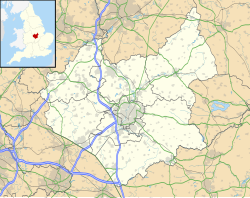| Newton Harcourt | |
|---|---|
 Newton Harcourt | |
Location within Leicestershire | |
| Area | 1.785937 sq mi (4.62556 km2) |
| Population | 194 (2011) [1] |
| • Density | 109/sq mi (42/km2) |
| OS grid reference | SP639969 |
| • London | 82 mi (132 km) |
| Civil parish | |
| District | |
| Shire county | |
| Region | |
| Country | England |
| Sovereign state | United Kingdom |
| Post town | LEICESTER |
| Postcode district | LE8 |
| Dialling code | 0116 |
| Police | Leicestershire |
| Fire | Leicestershire |
| Ambulance | East Midlands |
| UK Parliament | |
| Website | Wistow cum Newton Harcourt Parish Council |
Newton Harcourt is a village in the civil parish of Wistow, in the Harborough district, in the English county of Leicestershire, and lies 7 miles south-east of the city of Leicester on the northern ridge of the River Sence valley.

